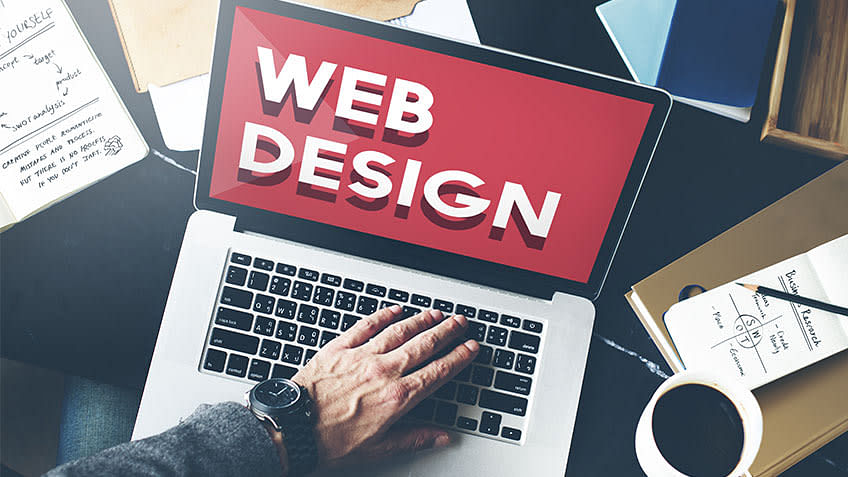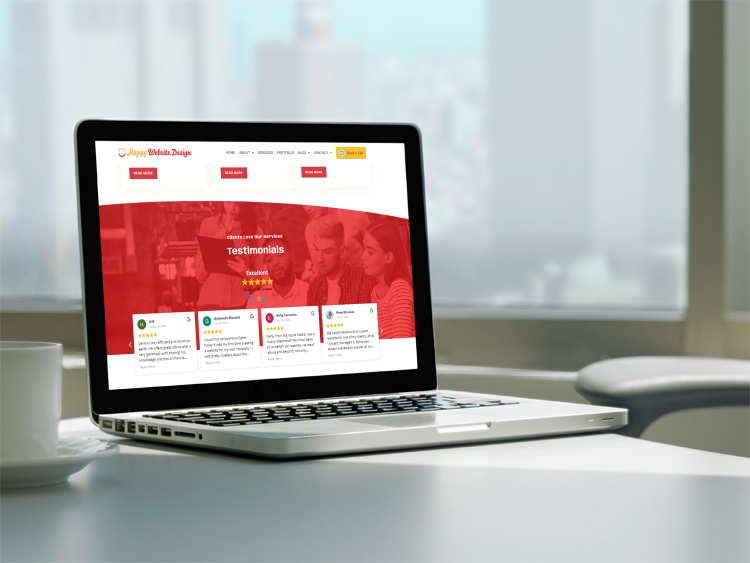Why Holistic Website Design Is the Key to a Seamless Customer Experience
In today's electronic landscape, the value of all natural web design can not be overstated, as it elaborately weaves together appearances, usability, and functionality to create a smooth individual experience. By taking on a detailed strategy that focuses on customer demands and leverages responses, developers can improve the total communication with their platforms.
Comprehending Holistic Web Layout

Including user comments and behavioral information is necessary in alternative web layout. This iterative procedure aids developers to recognize discomfort points and locations for enhancement, making sure that the end product reverberates with individuals. All natural style emphasizes the relevance of ease of access, ensuring that all customers, no matter of their capacities, can navigate and connect with the web site effectively.
Furthermore, the assimilation of receptive design concepts is critical in fitting various gadgets and display sizes, better improving the user experience. By recognizing the interconnectedness of these elements, developers can develop web sites that not only draw in but also keep individuals, inevitably driving interaction and conversions. Alternative website design is, therefore, a calculated approach that promotes a purposeful connection between customers and electronic areas, paving the method for sustainable on the internet success.
Trick Components of Holistic Design

An additional essential aspect is uniformity in aesthetic and useful aspects throughout the web site. This involves maintaining a natural shade palette, typography, and format, which helps individuals browse the site without effort - happy web design. Additionally, receptive style is necessary, making sure that the web site executes ideally across different tools and display dimensions
Availability is additionally an essential part of all natural style. By adhering to ease of access criteria, designers can produce comprehensive experiences that accommodate diverse customer groups, including those with impairments. Furthermore, the combination of material approach makes sure that valuable information is offered plainly and succinctly, enhancing understanding and involvement.
Last but not least, effective cooperation among layout, development, and advertising and marketing teams promotes a unified vision that aligns with organization goals. By concentrating on these key elements, holistic web style can provide an enhancing customer experience that is both engaging and practical.
Benefits of a Seamless Experience
Creating a smooth user experience provides many advantages that considerably boost total fulfillment and engagement. At its core, a seamless experience cultivates a feeling of convenience site and intuition, enabling individuals to browse a site or application effortlessly. This decrease in friction not just raises the possibility of users returning yet also improves their willingness to suggest the platform to others.
Furthermore, a smooth experience causes improved conversion rates. When users locate what they need with minimal effort, they are extra inclined to complete desired actions, such as making an acquisition or enrolling in an e-newsletter. This efficiency translates into greater consumer retention, as completely satisfied users are more probable to come to be dedicated advocates for the brand name.
In addition, a cohesive and seamless interface decreases cognitive tons, permitting customers to focus on content as opposed to battling with navigating or layout variances. This clarity article not only boosts customer fulfillment but likewise strengthens brand trustworthiness. Ultimately, focusing on a seamless customer experience leads to an affordable advantage, as organizations that buy this element are better positioned to fulfill the evolving expectations of their target market and drive long-term success.
Implementing Alternative Techniques
To achieve an absolutely seamless user experience, companies must take on all natural approaches that consider every element of layout and capability. This method begins with a linked vision that straightens staff member throughout various self-controls, including UX/UI style, web content advancement, and technical application. Efficient collaboration cultivates a common understanding of customer demands and goals, enabling for more systematic layout options.
Following, it is crucial to develop individual personas and trip maps that show the varied demographics and actions of the target audience. By feeling sorry for individuals' point of views, companies can expect obstacles and enhance interactions throughout the digital experience.

Furthermore, constant branding and messaging need to permeate every touchpoint, guaranteeing a recognizable and reliable presence that improves individual involvement. Incorporating receptive layout concepts is additionally crucial, as individuals now communicate with web content throughout multiple tools.
In addition, companies need to prioritize availability, guaranteeing that all individuals, despite capacity, can browse and profit from their electronic offerings. By embedding these holistic strategies right into the design procedure, companies can develop a natural and pleasurable user experience that advertises contentment and loyalty.
Gauging Individual Experience Success
While attaining a holistic strategy to why not find out more website design is vital, determining user experience success is equally important to make certain that style methods properly meet individual requirements. This requires a mix of qualitative and measurable metrics to gain a thorough understanding of user interactions and satisfaction levels.
Key efficiency signs (KPIs) such as customer engagement, conversion prices, and bounce rates give valuable quantitative understandings. For example, a high conversion price might indicate that users discover the layout intuitive and engaging. Conversely, elevated bounce prices can indicate that users are disgruntled or baffled, necessitating a reevaluation of the layout components.
Qualitative actions, consisting of user comments, studies, and use screening, are essential for getting deeper insights right into the individual experience. Examining individual comments can disclose pain points and areas for improvement, while usability tests permit developers to observe real-time communications and recognize challenges users encounter.
Eventually, the assimilation of these dimension methods permits continual refinement of website design, guaranteeing it stays user-centered and reliable in providing a seamless experience (happy web design). On a regular basis reviewing these metrics will make it possible for developers to adapt to evolving individual needs and preferences, strengthening the general success of a holistic internet layout approach
Final Thought
In verdict, alternative web design becomes a fundamental approach to achieving a smooth user experience. By integrating aesthetic appeals, capability, and usability, this design philosophy addresses varied customer demands and choices. The concentrate on user-centered approaches not only boosts navigation and contentment but additionally fosters brand name credibility and availability. Inevitably, the execution of alternative style principles substantially adds to enhanced conversion rates and client retention, developing a robust framework for effective digital communications.